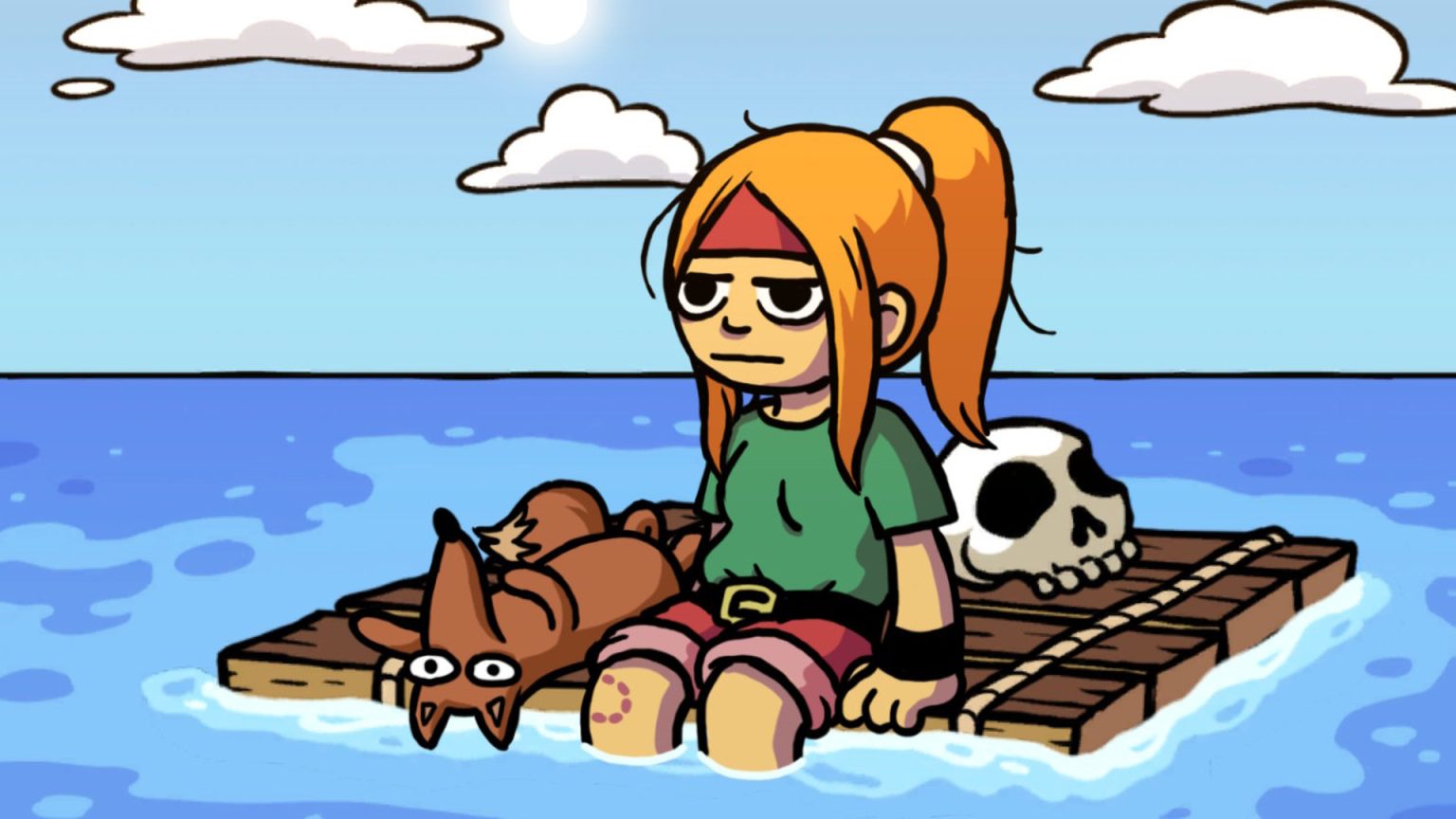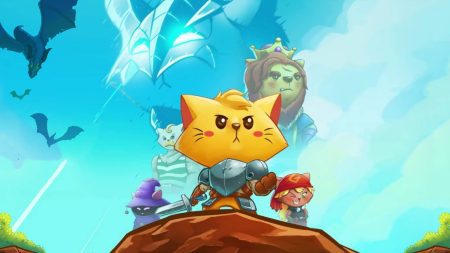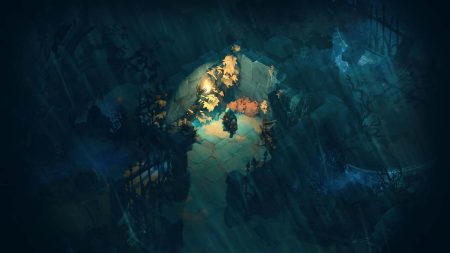It’ll Do Just Fine.
2017 was the year of Zelda. While the Switch’s continued sales success and Super Mario Odyssey’s rave reviews help further the point that, yes, Nintendo has had a banner year, Breath of the Wild was the title that kicked everything off. Vast, open, and free, The Legend of Zelda: Breath of the Wild ushered in a new era for 3D Zelda games.
But what about that old-school 2D Zelda itch? It’s been over four years since A Link Between Worlds graced people’s 3DS screens. While some may have enjoyed the more recent Tri Force Heroes’s multiplayer action, the reality is that a good 2D Zelda experience has been hard to come by.

Ittle Dew 2+, developed by Swedish studio Ludosity and published by Nicalis, offers just that. Released back in 2016 for PC, Xbox One, and PlayStation 4, Ittle Dew 2+ has made its way to the Nintendo Switch, sporting additional dungeons as well as a newfound handheld portability. With its side-splitting sense of humor, addictive puzzles, and refreshing approach to dungeons, Ittle Dew 2+ is not just a fantastic take on 2D Zelda but also a great game in its own right. Loose controls and tedious combat dampen the fun, but Ittle Dew 2+’s wit and charm makes it an easy recommendation for those looking to bolster their Switch library.

Drifted Ashore
Ittle Dew 2+ avoids a long-winded introduction, opting to throw players into gameplay at the onset of the game. As the young girl Ittle Dew—accompanied by her talking fox, Tippsie—players find themselves shipwrecked on an island with no means of getting home. After coming to the conclusion that they’ll need to build a raft in order to leave, Ittle and Tippsie set off in order to locate eight raft pieces scattered throughout the island.
As luck would have it, each raft piece happens to be locked inside a menacing dungeon and safeguarded by a dungeon boss. Armed only with a stick and five hearts, Ittle sets out to conquer these dungeons and collect each raft piece in order to return home.
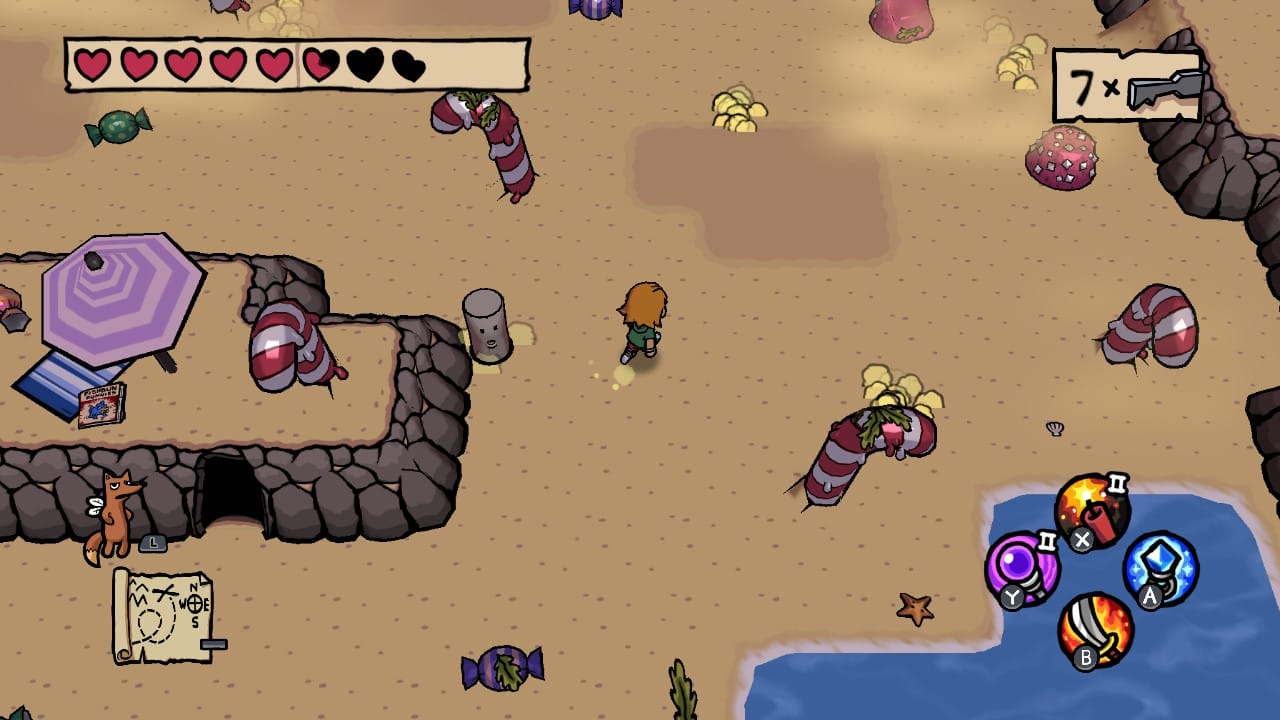
In terms of both its premise and world design, Ittle Dew 2+ shares a lot with the Legend of Zelda franchise. Its story of an adventurer washing up on a mysterious, dangerous island harks back to Link’s Awakening for the Game Boy. Meanwhile, the concept of traversing an screen-scrolling overworld and completing increasingly difficult dungeons using a variety of equipped items dates back to the original The Legend of Zelda from 1986.
Despite the fact that Ittle Dew 2+ borrows heavily from Zelda, it doing so never feels forced. The game has a quippy sense of self that it employs frequently, from on-the-nose signposts that read “Dungeon 1” or “Dungeon 2” to NPCs that chastise Ittle for destroying the (apparently extremely fragile) interiors of their houses.
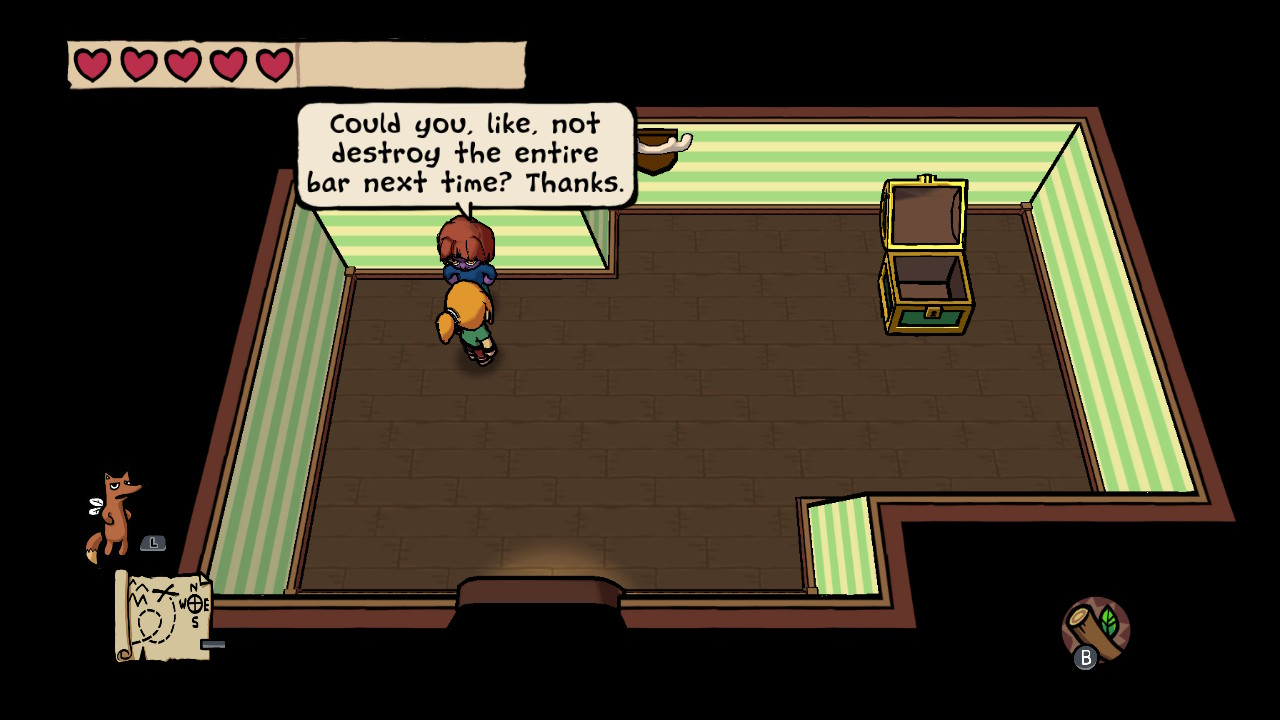
While NPC dialogue is clever, even better are the interactions between Ittle and Tippsie. The two make a formidable team, with Ittle serving the traditional “Link” role and Tippsie acting as her guide, like Navi from Ocarina of Time or Fi from Skyward Sword. Throughout their journey, Ittle and Tippsie don’t hesitate to banter about the dungeons they find and bosses they fight. While these dialogue exchanges are typically brief and saved for the beginning and ends of dungeons, they nearly had me in tears when they inevitably showed up.

While its story doesn’t reinvent the wheel, that’s sort of the point. Ittle Dew 2+ knows darn well what it is, and it does a great job capitalizing on this through wry humor and nostalgic charm. The game even manages to throw some friendly shade at its influences from time to time.
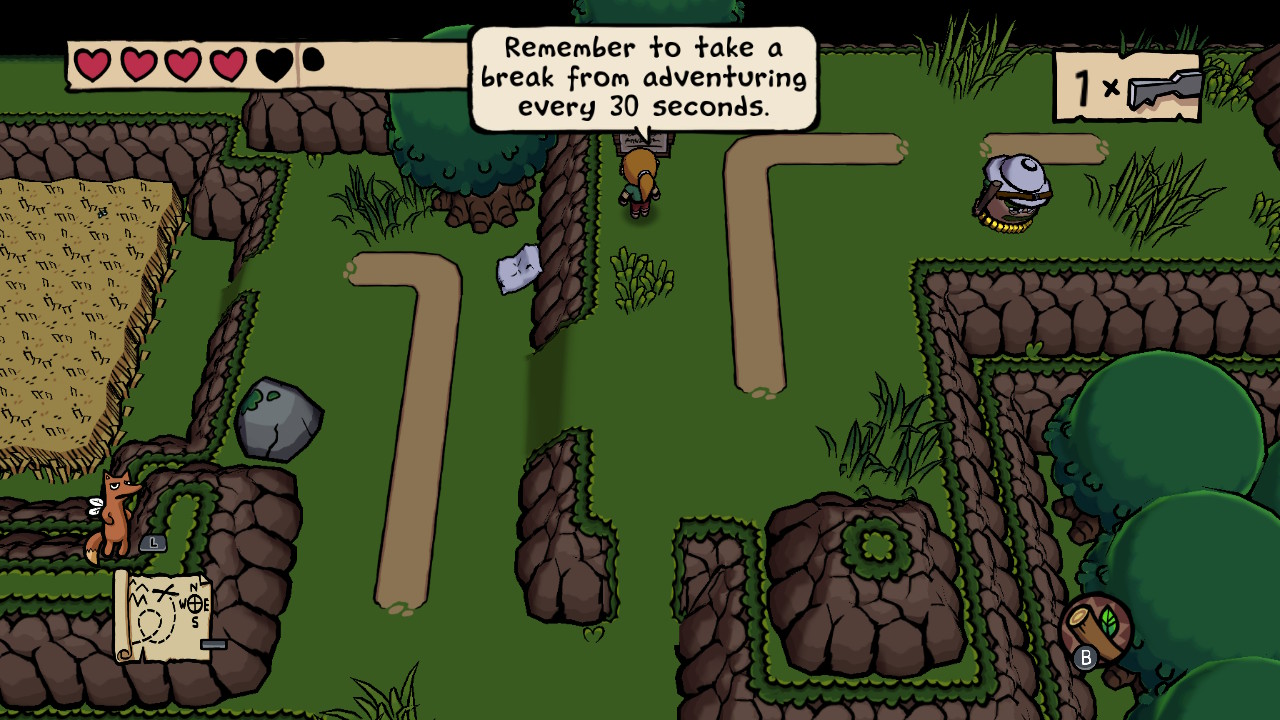
It’s Dangerous to Go Alone
While its satirical tone might suggest otherwise, Ittle Dew 2+ has an extremely robust gameplay experience at its core. The game world at the player’s fingertips is sprawling and open, ranging from lush forests and snowy plains to fiery canyons and coastal beaches. Each of the game’s eight areas contains a dungeon (helpfully marked on an in-game map) along with smaller caves filled with puzzles, treasures, and NPCs.
If you’ve played a 2D Zelda game, you’ll feel right at home. Navigating Ittle Dew 2+’s world is a blast thanks to smart level design and the inclusion of helpful warp points that cut down on needless backtracking. Secrets are hidden both in plain sight and in hard-to-reach areas; players will have to scour the landscape to find every single nook and cranny Ittle Dew 2+ has to offer.

Dungeons are equally engaging thanks to smart design and some phenomenal puzzles. Unlike in Zelda, players are given a dungeon map upon entry. The focus therefore lies on finding keys and unlocking various doors to get to the final boss at the end of the labyrinth. The decision to scrap dungeon maps is a welcome one, helping to place the focus back on combat and puzzle solving.
Unfortunately, the combat in Ittle Dew 2+ is underwhelming. Ittle’s basic attack, swinging her stick (sword), feels loose and unwieldy. Striking enemies has little in the way of physical feedback, and I often found myself walking into enemy attacks without realizing it. While Ittle has a dodge move at her disposal, enemies telegraph their attacks too quickly which leaves little time to successfully evade them. As a result, combat always tended to feel either far too easy or far too difficult (depending upon which enemy I was facing) with little room in between. While the addition of later items such as a magic rod and stick of dynamite alleviates some of these issues, I never quite came to enjoy combat.
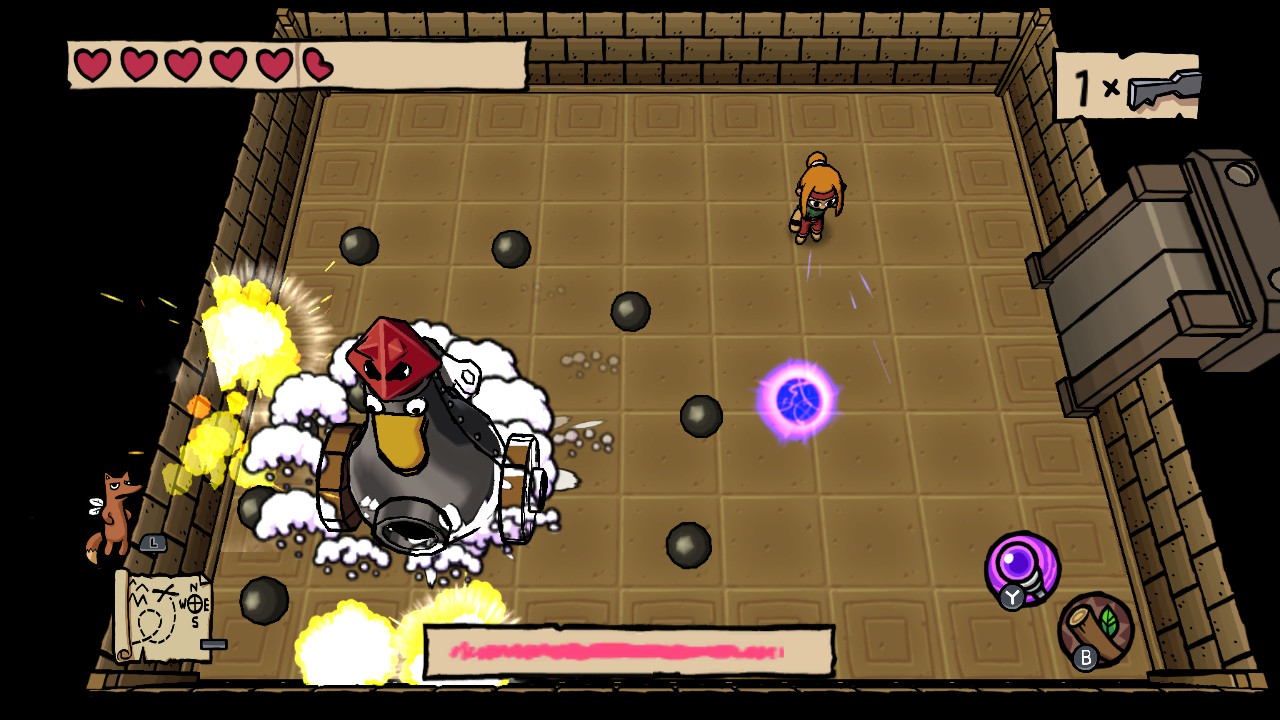
Ittle Dew 2+’s puzzles, on the other hand, are fantastic. While most end up falling into one of three categories—block-pushing, crystal-hitting, and button-pressing—these puzzles often managed to stump me on my first attempt. The solutions wouldn’t always present themselves soon either; many puzzles required me to exit a room and re-enter several times before I could successfully work out the correct sequence. Unlike combat, puzzles in Ittle Dew 2+ are challenging but fair, and they soon became my primary motivation for seeing each major dungeon through.
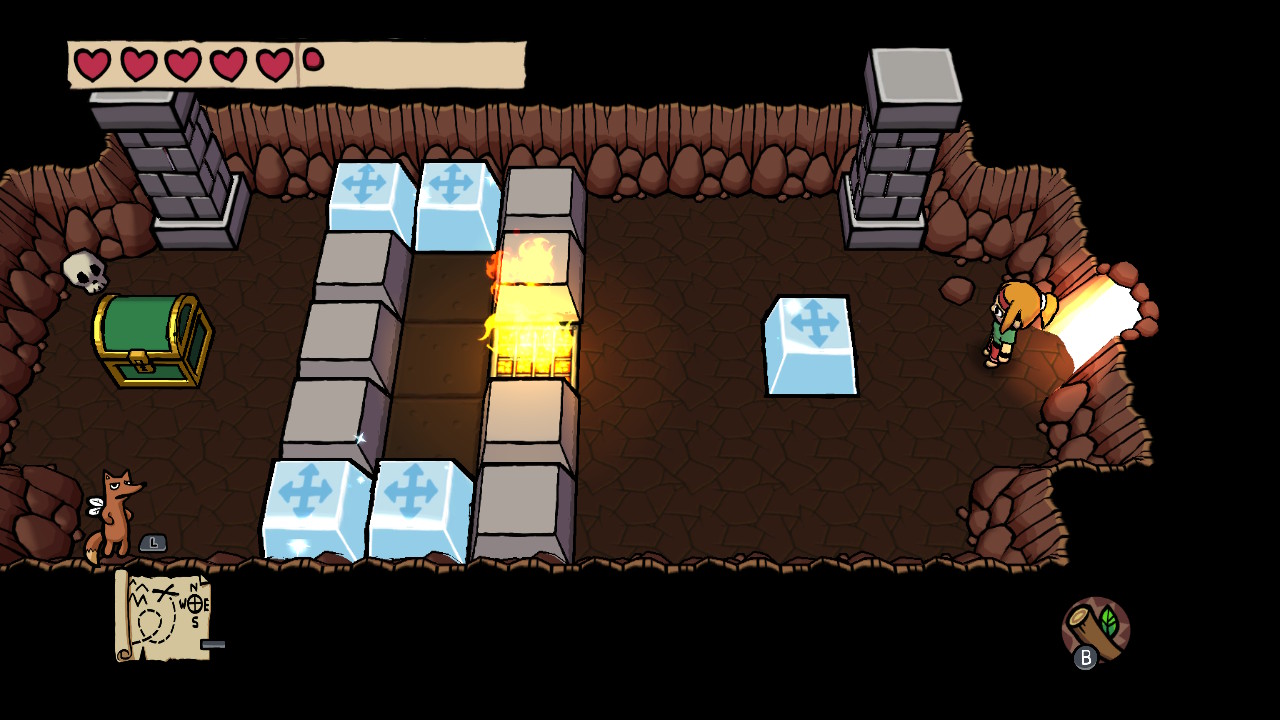
Surprisingly Free
One of Ittle Dew 2+’s most welcome features is the ability to complete dungeons in any order. While dungeons have a preset order based on difficulty (and the map only points to the next dungeon in the sequence), any dungeon can be entered at any time and completed using Ittle’s stick and whatever new item is found within.

While A Link Between Worlds allowed a similar degree of freedom, it removed items entirely from dungeons so that players could rent or buy them out in the overworld. Cleverly, Ittle Dew 2+ avoids the pitfalls of this system; rather than eliminating items from dungeons, it provides numerous ways to complete each level. If a player enters a dungeon without the fire sword, for example, they may have a harder time melting blocks to complete certain puzzles, but there will always be at least one way to progress.
Aiding this system is Ittle Dew 2+’s useful hint mechanic. At the press of a button, Ittle can call on Tippsie to explain what is needed to complete a certain dungeon or puzzle. Most of the time, players will find that a majority of puzzles can be completed using only Ittle’s stick; in the case that they’re not, these hints will make it abundantly clear. As is the case with anything in Ittle Dew 2+, these hints are absolutely hilarious.

Final Thoughts
Ittle Dew 2+ is a fine addition to the Switch library of games. Its game world presents an openness that calls to mind some of the greatest Zelda games in recent memory, while smart use of fast travel prevents the adventure from feeling tedious. As a result, a normal playthrough may take anywhere between 5 to 8 hours depending upon how many secrets and side puzzles players find and complete. The inclusion of five new side dungeons for the Switch version extends this playtime further. However, these dungeons tend to be far more difficult than any found in the main game and lack some of the accessibility that makes the main campaign so compelling.
While its combat feels second-hand compared to the rest of the experience, Ittle Dew 2+ is a fantastic game that Zelda fans and non-fans alike will enjoy. With accessible dungeon design, challenging puzzles, and humorous characters, Ittle Dew 2+ proves its worth not just as a Zelda clone, but as a bonafide action-adventure game in its own right.
Score: 8.6/10
David is the founder of The Punished Backlog. He has a problem finishing games he starts.
Just beat: Donkey Kong Bananza.
Working on: Hollow Knight: Silksong.
Can't wait for: Metroid Prime 4: Beyond.
Follow David on Twitter at @David_Silbert to keep up to date with all things The Punished Backlog.


